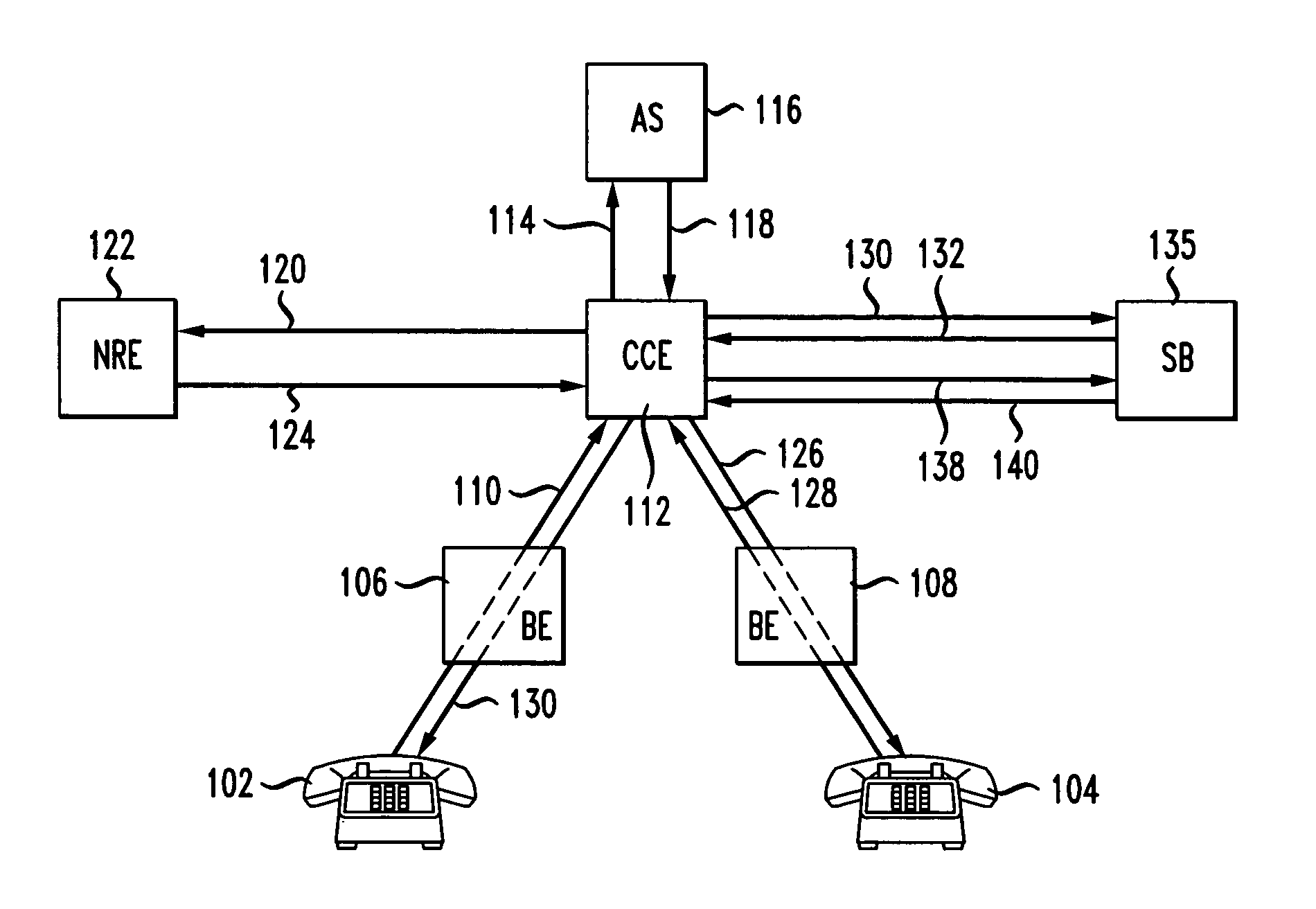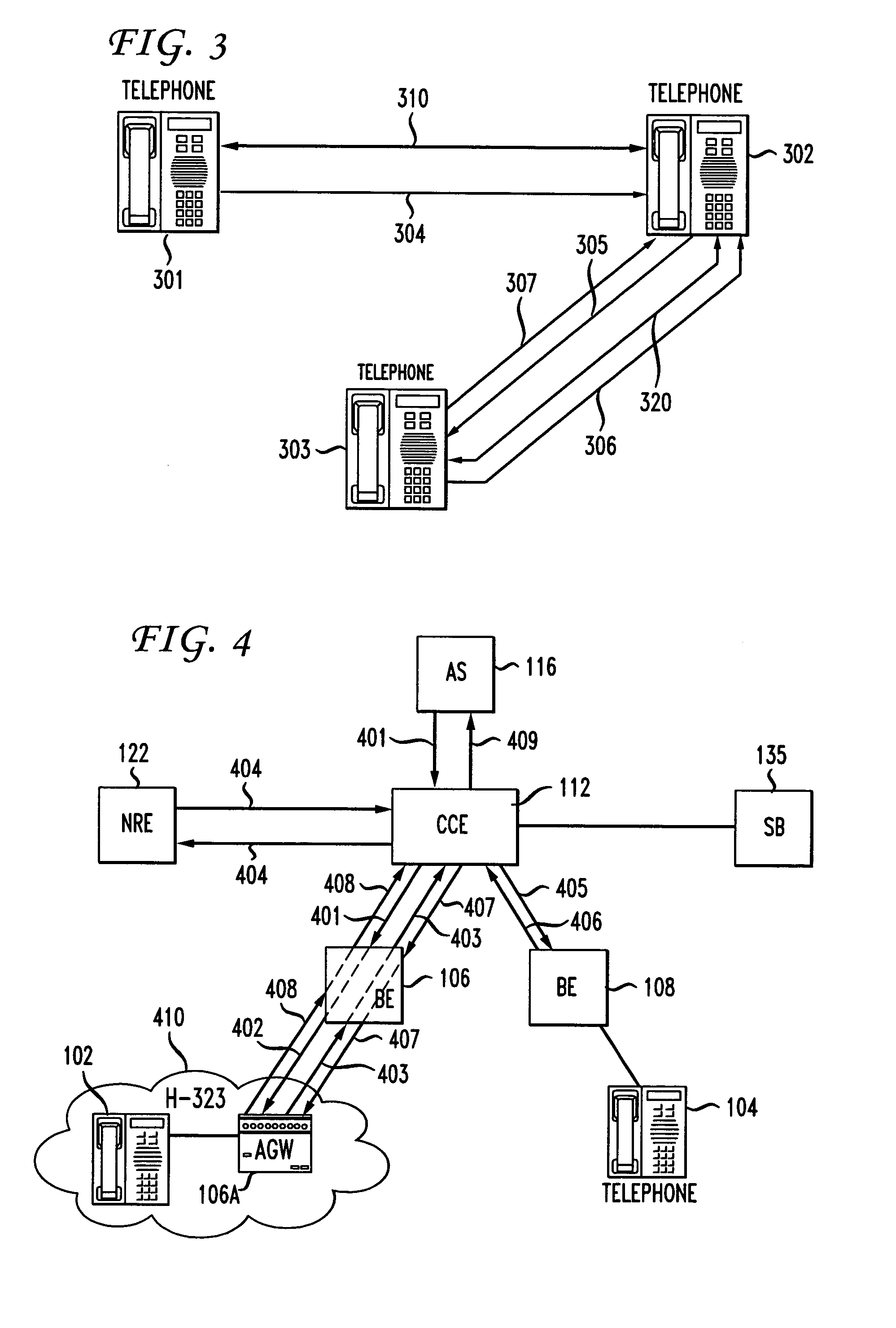Combined H.450.2 and SIP call transfer
a call transfer and call technology, applied in the field of combined h.450.2 and sip call transfer, can solve the problems of difficult development of an architecture that facilitates communication services in networks relying on such multiple existing protocols, inefficient circuit design between all calling and called parties, etc., and achieve the effect of improving call setup signaling
- Summary
- Abstract
- Description
- Claims
- Application Information
AI Technical Summary
Benefits of technology
Problems solved by technology
Method used
Image
Examples
Embodiment Construction
[0015]FIG. 1 shows an IP network in which one embodiment of the present invention may be implemented. The network utilizes the Session Initiation Protocol (SIP) in order to set up connections (e.g., VoIP calls) between users. As discussed previously, SIP is a well known application-layer control protocol used to establish, modify and terminate sessions such as IP telephony calls. SIP is described in detail in Internet Engineering Task Force (IETF) Request for Comments (RFC) 3261; SIP: Session Initiation Protocol; J. Rosenberg, H. Schulzrinne, G. Camarillo, A. Johnston, J. Peterson, R. Sparks, M. Handley, E. Schooler; June 2002, which is incorporated by reference herein. The details of SIP will not be described herein, as the protocol is well known to those skilled in the art. The protocol will be described only insofar as necessary for an understanding of the present invention.
[0016]With reference to FIG. 1, it is to be understood that the network elements shown in FIG. 1 are logica...
PUM
 Login to View More
Login to View More Abstract
Description
Claims
Application Information
 Login to View More
Login to View More - R&D
- Intellectual Property
- Life Sciences
- Materials
- Tech Scout
- Unparalleled Data Quality
- Higher Quality Content
- 60% Fewer Hallucinations
Browse by: Latest US Patents, China's latest patents, Technical Efficacy Thesaurus, Application Domain, Technology Topic, Popular Technical Reports.
© 2025 PatSnap. All rights reserved.Legal|Privacy policy|Modern Slavery Act Transparency Statement|Sitemap|About US| Contact US: help@patsnap.com



